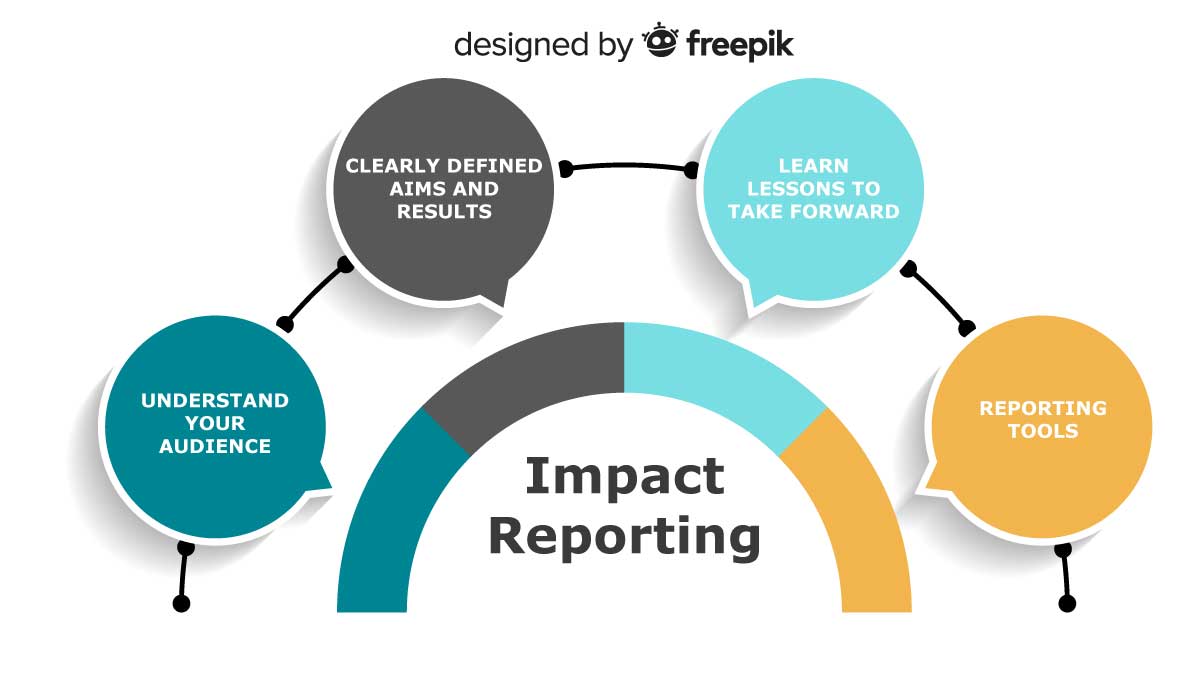Introduction
For NfPs, providing transparency across all elements of operational performance is critical to ensure confidence remains high across all stakeholders from key trustees to the smallest of donors.
A major part of this is reporting on the impact you are having on your beneficiaries, showing. for example, not only how grants are awarded, but also the wider impact these are having – not just in financial terms.
This short guide will focus on the key areas of impact reporting, not only on what to include but also on the most efficient way of collating and storing the information required to bring your impact reporting to the forefront of any analysis you have at any level. These key areas include:
- Understanding your audience
- Clearly defined aims and results
- Learning the lessons to take forward
- Reporting Tools
The above elements by no means constitute a complete list, however using these four areas to structure your outputs will lead you down the right path to achieving successful impact reporting.

Understanding your audience
All levels of stakeholders will be interested in your impact reports, including potential donors who are yet to give any funds to your organisations.
Your reporting must cater for, and be clear to, volunteers, employees and trustees – consisting of a mixture of narrative and images to inspire, publicise and celebrate, in addition to thought-provoking elements to engage at any level.
Always celebrate what good your organisation is doing through images, press cuttings, quotes from beneficiaries and both financial and non-financial numbers to really inspire people to join you in contributing to your good causes.
Clearly defined aims and results
For any impact report to do its job properly, it is essential that anyone who is reading it is clear on what your organisation stands for.
Ensure the specific aims of your NfP organisation are clearly visible within the report on regular occasions, referring back to them as much as possible. If you have numerous aims, make sure they are given their own specific page or sub-section to really highlight them as separate from others.
Report your results directly against these aims to provide the reader with a full picture. Always be honest, no-one expects a full success rate against every aim – but be honest in numbers and evaluations.
Learning the lessons to take forward
Within your impact report, show that you are taking on and embracing the lessons you are learning as an organisation and feeding them forward into future projects around your beneficiaries.
Go into detail about positive and negative experiences, and how these will shape how things are done in the future.
These experiences should cover both income, including events and any targeted marketing done around campaigns, and expenditure, providing the recipient of the report the knowledge that every action is being reviewed and, if necessary, will be acted on in the future to increase the impact your organisation will have in its specific area.
Reporting Tools
In all previous m-hance guides which we have published which touch on reporting of any kind, we always stress the importance of using the right reporting tool as a key element to achieve a great reporting output of any kind, to any audience.
A common limitation on reporting capabilities isn’t the user themselves, but where data is being provided from across multiple systems – and therefore the reporting platform(s) available can hold back any joined-up reporting approach.
If this sounds familiar to you, think of a reporting platform which allows for data sources to be imported into one model and therefore are held centrally. Impact reporting data is sometimes difficult to quantify within some commonly used systems, so having a tool which can link this to income, campaigns, events and marketing really will assist you in the production of the report itself.
Also, if your reports take up a large amount of administrative time, consider systems which allow for automated data refresh – such as Microsoft Power BI.
Whatever tool you choose, and there are a number of very affordable ones out there with affordable pricing for the NfP/Charity sector, make sure it fits your needs not only now but for the short to mid-term.
Summary
Impact reports can be extremely difficult to compile. As mentioned above, impact reporting data can be held in numerous places (if in any system at all). When contemplating what to include in your Impact Report, please bear in mind that these can now be easily obtainable via different resources, so always keep your audience in mind.
There is no doubting the compilation of the report can be time-consuming, therefore choosing the right reporting tool is a must. However, by following the recommendations above, you should be as efficient as possible in analysing your data to the specific requirements.
Finally, be honest within your impact report, as nobody expects every beneficiary project to be a roaring success, that said – ensure you highlight and celebrate the positive impact(s) your organisation has as much as possible!!!
Should you wish to discuss any of the above further or see how we at m-hance can assist with your reporting requirements across our product range, please get in contact.
Authored by Daniel Booth




